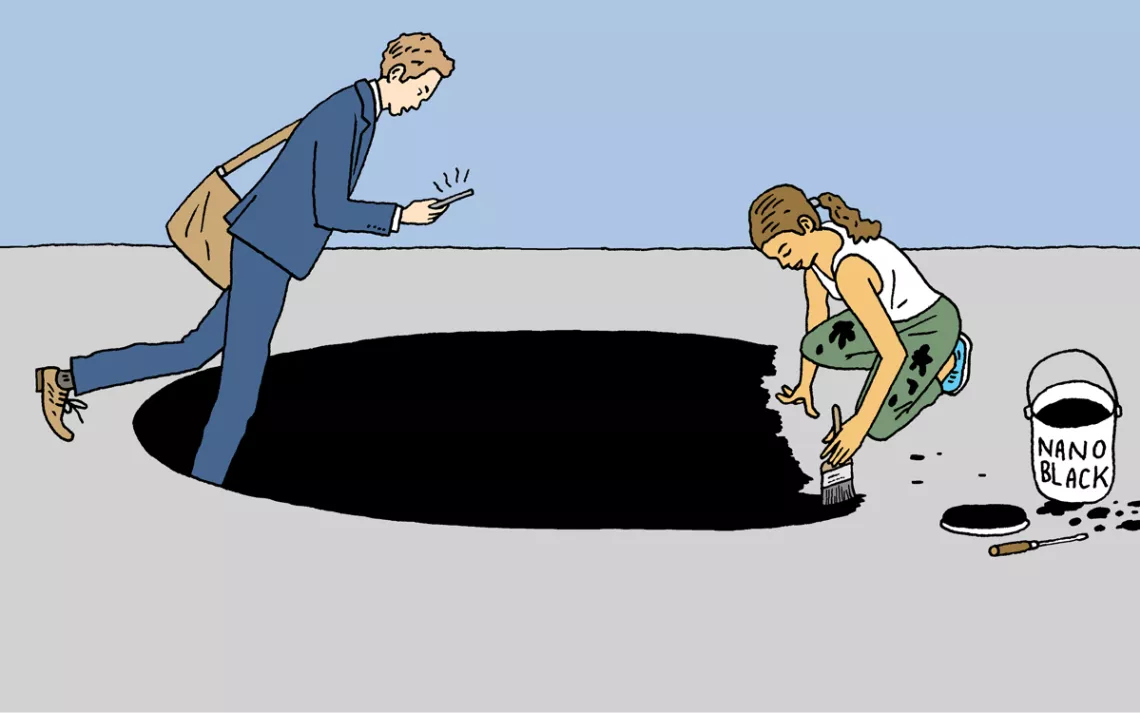ICYMI: Paint It Blackest Black & a Runaway Emu
A weekly roundup for busy people

Illustration by Peter Arkle
Scientists develop a shade of black that is 10 times blacker than the formerly blackest black.
There are nearly 3 billion fewer birds today in North America than there were in 1970—or nearly one in four has disappeared.
The kids are on (climate) strike.
Trump complains that energy-efficient lightbulbs make him look orange.
Oil prices surge after a flock of drones puts half of Saudi Arabia’s oil refining capacity out of commission.
A runaway emu leads California Highway Patrol on a high-speed chase down Highway 99.
The Trump administration’s plan to raze 30,000 acres of pinyon and Utah juniper within the Grand Staircase–Escalante National Monument is foiled.
The CIA has declassified details of its secret Cold War spy-pigeon missions.
A study in Science finds that imidacloprid, the world’s most widely used insecticide, suppresses the appetites of birds, depriving them of the precious fat they need to migrate.
German politicians propose doubling taxes on domestic flights as part of a wider plan to cut CO2 emissions.
Greenhouse gas emissions from air travel may have been dramatically underestimated, and climate protestors have set their sights on airline regulators.
The University of California system announces it will divest the 80 billion in its endowment and pension fund from fossil fuels—not out of idealism, says its chief investment officer, but because fossil fuels are a terrible investment.
If greenhouse gas levels continue to rise, the clouds will not be our friends.
Two-thirds of Americans now believe climate change is either a crisis or a serious problem, with a majority wanting immediate action to address it.
A new study predicts that climate change will cause the range of valley fever—a deadly fungal infection—to more than double in size during this century.
The UK Advertising Standards Authority cracks down on energy advertisements that imply natural gas is a source of low-carbon energy.
Fish bones excavated from the early Neolithic Jiahu site in Henan Province, China, show evidence of managed carp aquaculture dating back to 6000 BC.
The number of northern white rhinos left in the world is up from two females to two females plus two embryos.
The black hole at the center of the Milky Way appears to be growing hungrier.
Scientists in Antarctica find a blobbish creature 11,000 feet under the ice that they describe as “like nothing seen before.”
 The Magazine of The Sierra Club
The Magazine of The Sierra Club



